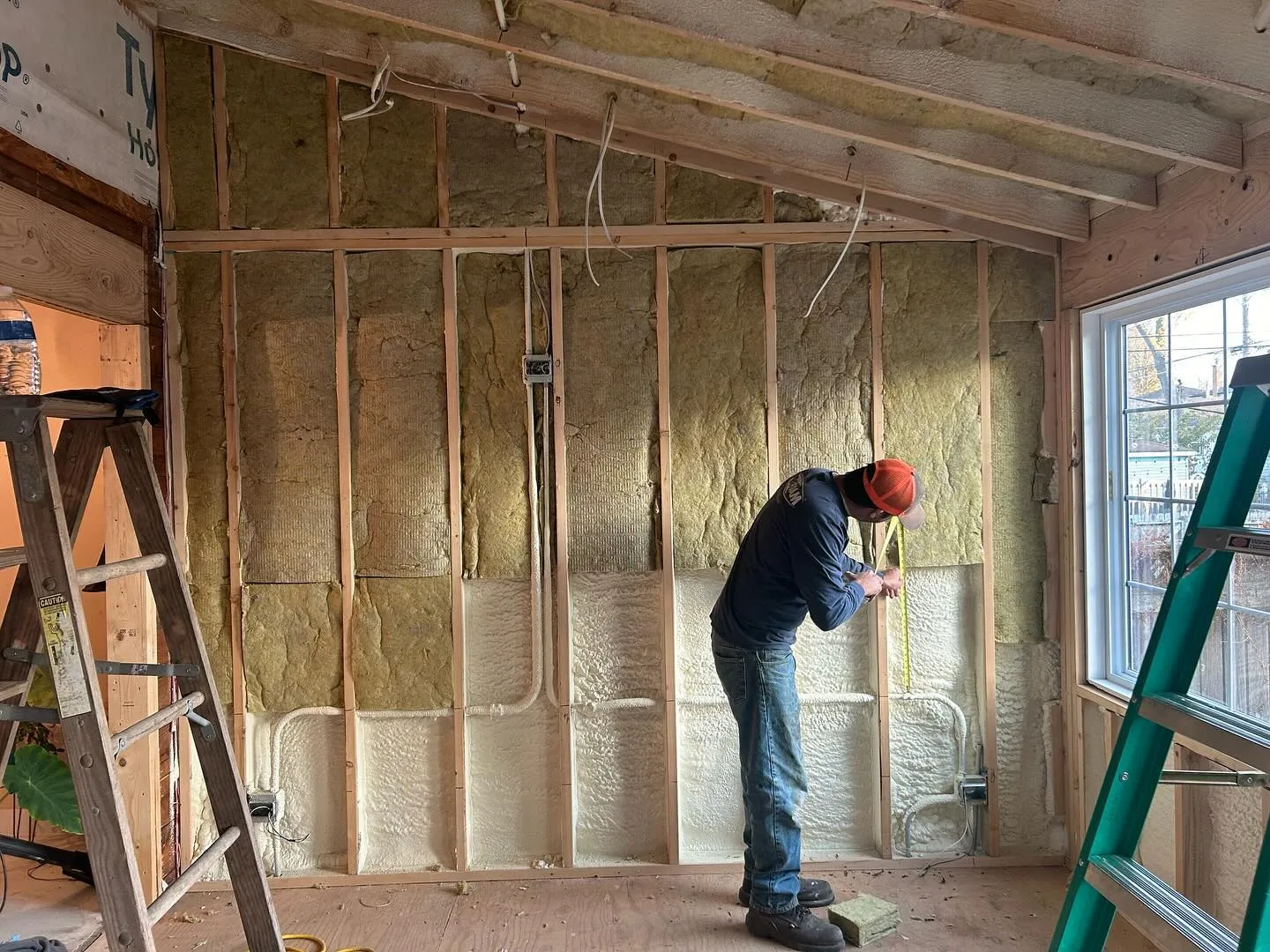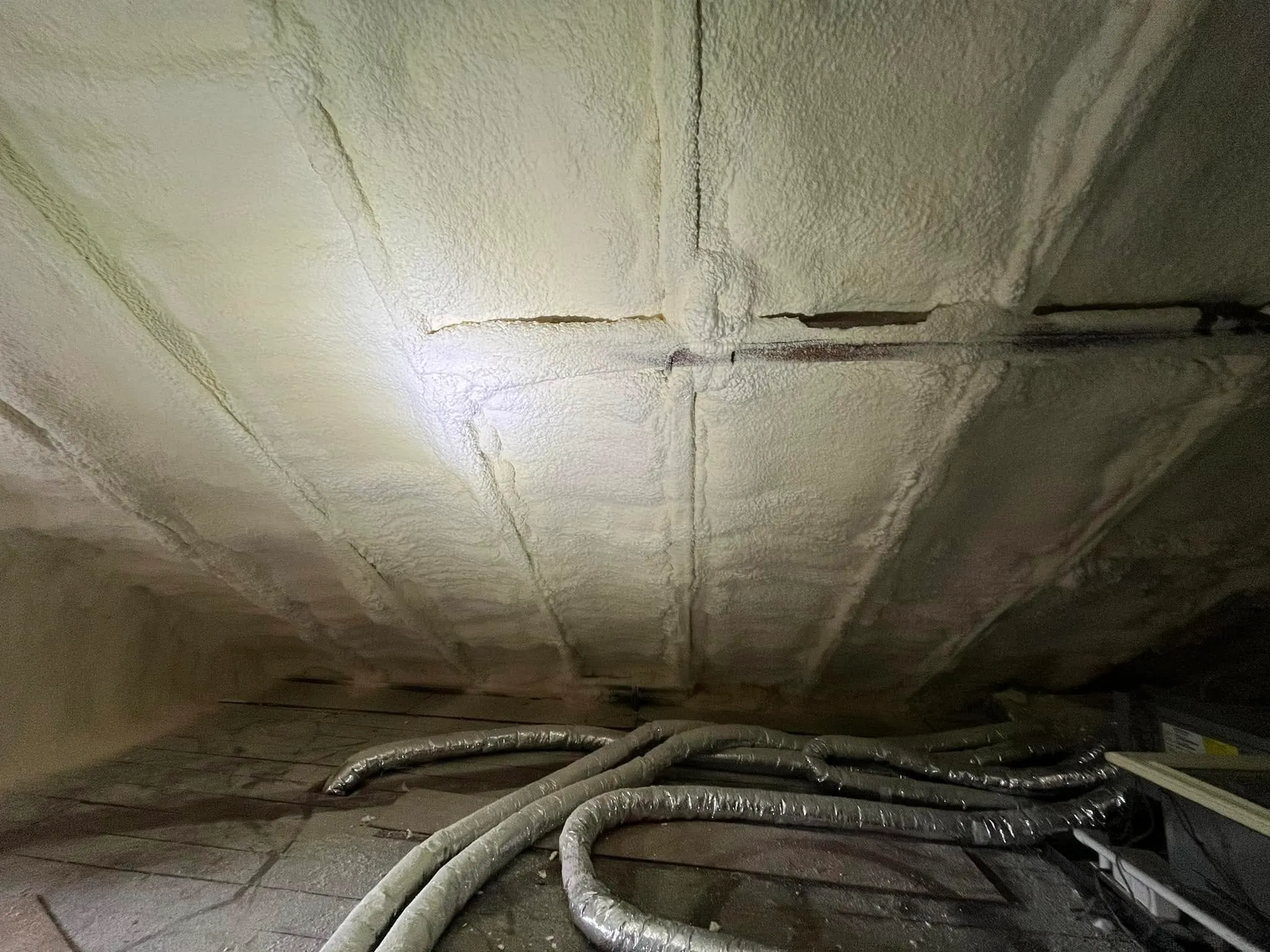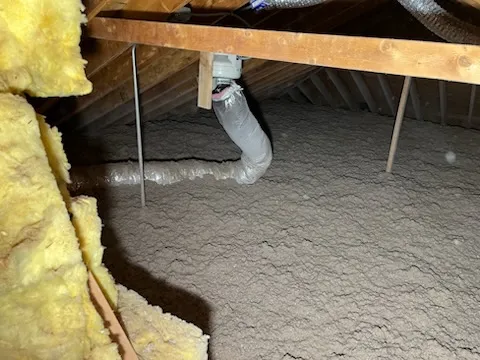
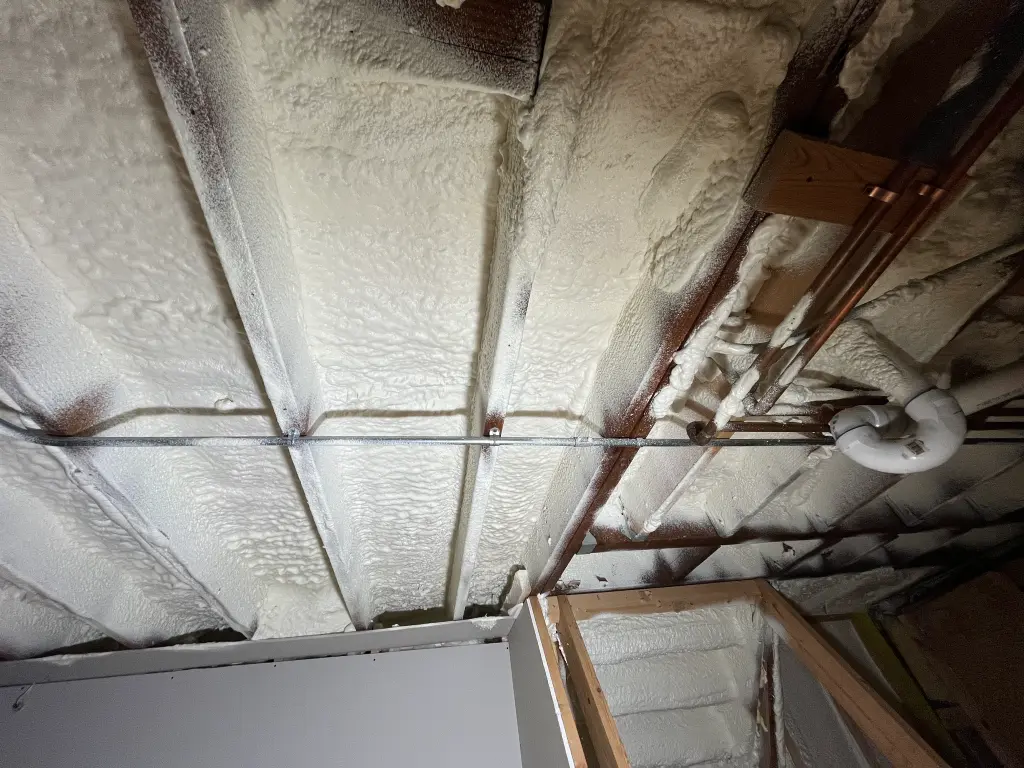
Spray foam insulation significantly lowers monthly energy bills by creating a highly effective thermal barrier. Schaumburg homeowners experience reduced heating and cooling loss year-round by sealing gaps, cracks, and air leaks that traditional insulation often misses. Homes with spray foam consistently maintain stable indoor temperatures, easing the load on HVAC systems and reducing long-term utility costs.
Open-cell and closed-cell spray foam both offer superior R-values per inch compared to fiberglass or cellulose, which makes them effective even in challenging areas like attics and crawlspaces. In Schaumburg’s mixed-humid continental climate, these benefits result in more consistent comfort during seasonal temperature swings and substantial energy savings across heating and cooling seasons.
South Chicago Insulation has extensive experience applying spray foam insulation across Illinois homes, adapting material selection and installation method to building age, structure type, and energy performance goals.
Spray foam creates an air seal that traditional batts or blown-in materials cannot achieve. It reduces heat transfer by both conduction and convection, preventing conditioned air from escaping and outdoor air from entering.
| Insulation Type | R-Value per Inch | Air Seal | Moisture Resistance | Lifespan | Common Use Areas |
|---|---|---|---|---|---|
| Open-Cell Spray Foam | 3.5 – 3.9 | Yes | Moderate | 30+ yrs | Walls, ceilings |
| Closed-Cell Spray Foam | 6.0 – 7.5 | Yes | High | 30+ yrs | Roof decks, crawlspaces |
| Fiberglass Batt | 2.9 – 3.8 | No | Low | 15-25 yrs | Stud bays, attic floors |
| Blown-In Cellulose | 3.2 – 3.8 | No | Moderate | 20-30 yrs | Attics, retrofit walls |
Schaumburg winters reach lows around 13°F and summers often exceed 85°F. Spray foam’s air-sealing quality makes it ideal for homes in the area. Closed-cell foam adds structural strength, resists water, and prevents mold growth in high-humidity zones like basements.
Bonus Tip: Spray foam applied on the roof deck instead of the attic floor can convert an attic into a semi-conditioned space, improving HVAC performance.
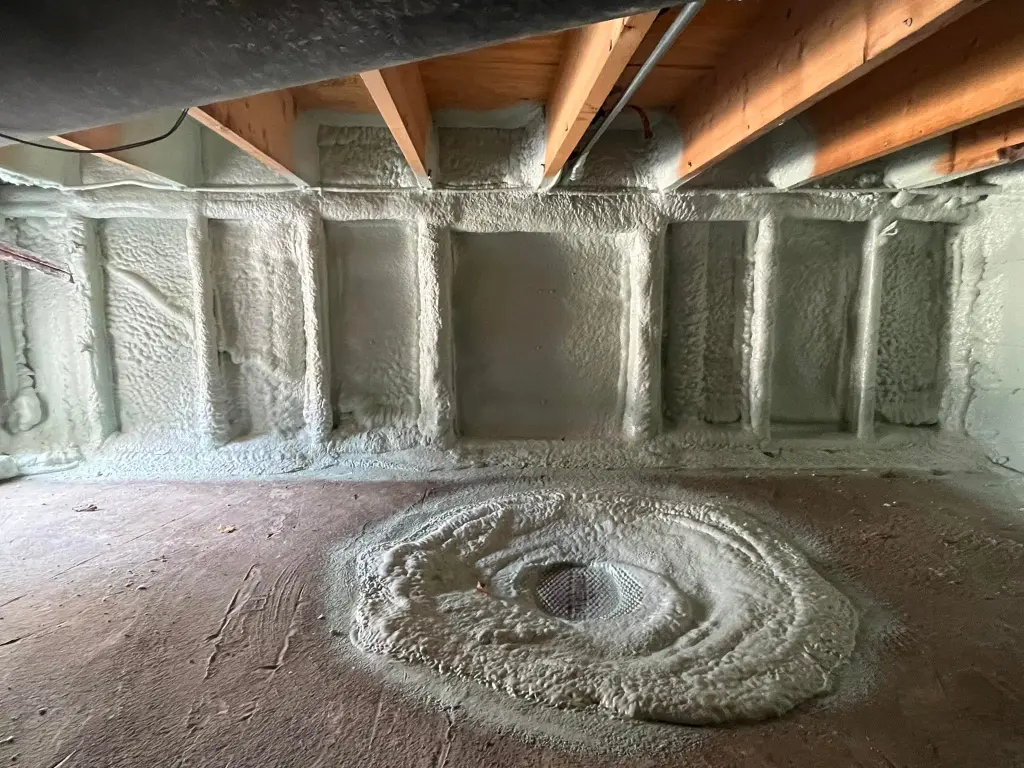
Bonus Tip: Infrared imaging before and after insulation reveals hidden problem areas and validates insulation coverage.
Yes, when professionally installed. Once cured, spray foam does not emit harmful gases. Proper curing and ventilation during installation are critical.
Not directly. Removal or adaptation is typically required to ensure proper bonding and effectiveness.
Yes. ComEd and Nicor Gas offer insulation rebates in Illinois. Home performance evaluations may be required.
Yes. Homeowners often report reduced drafts and temperature swings within days of application.
For expert evaluation and installation in Schaumburg homes, contact:
South Chicago Insulation
Phone: (779) 803-8025
Email: [email protected]
It can last 30 years or more without needing replacement if installed correctly.
Yes. Open-cell spray foam helps reduce airborne noise between rooms and from exterior sources.
Yes, but older homes may need electrical or framing updates before installation.
Clear access to work areas and plan to vacate during installation due to off-gassing during curing.
Yes. Closed-cell spray foam is commonly used in pole barns and metal structures for thermal and moisture control.

